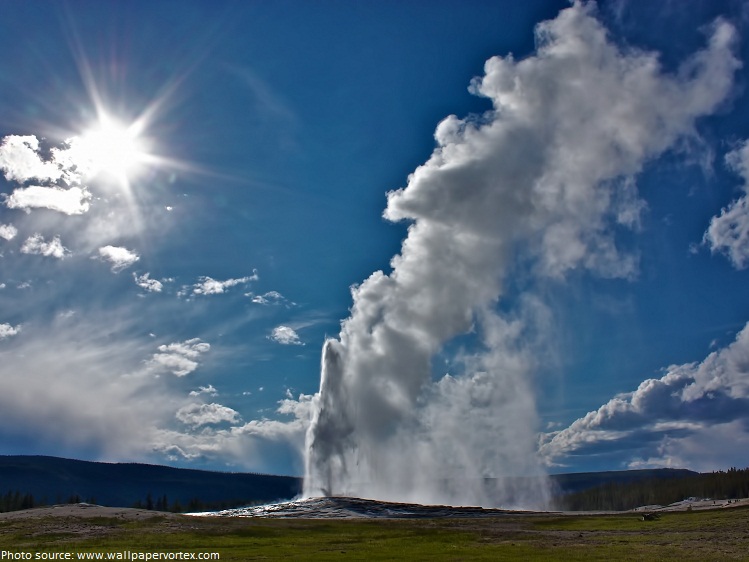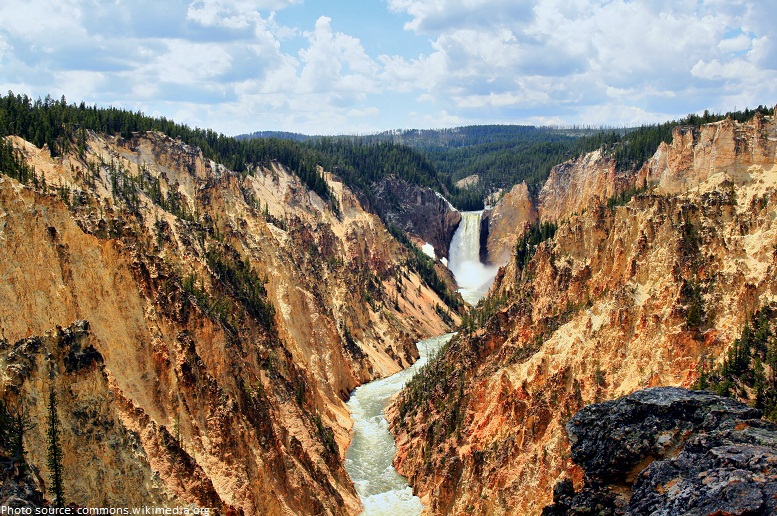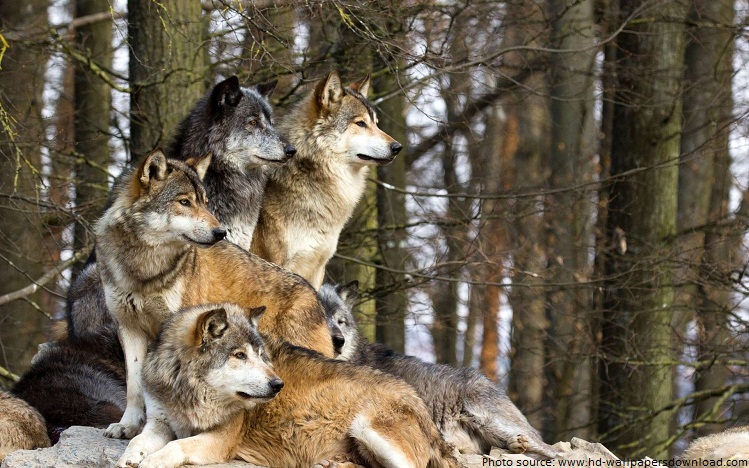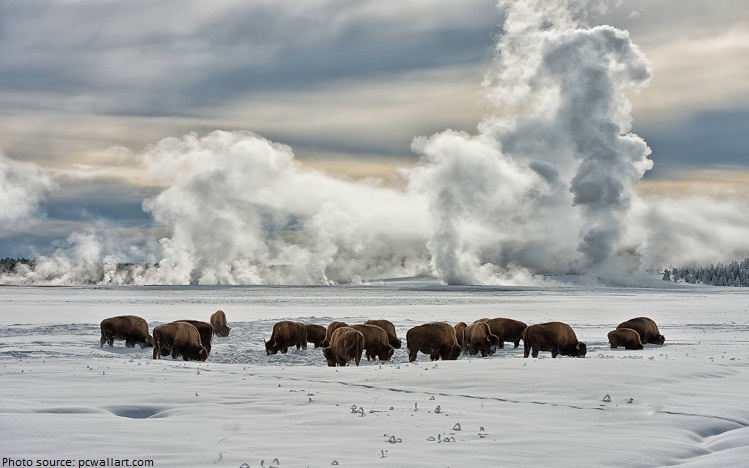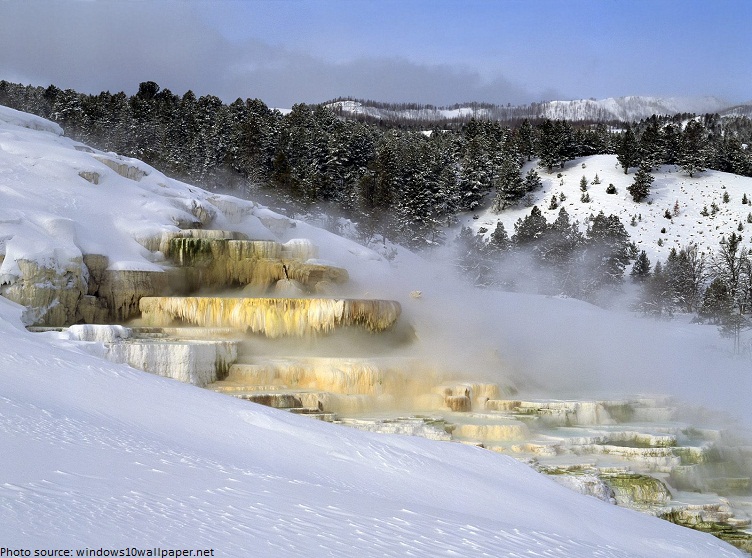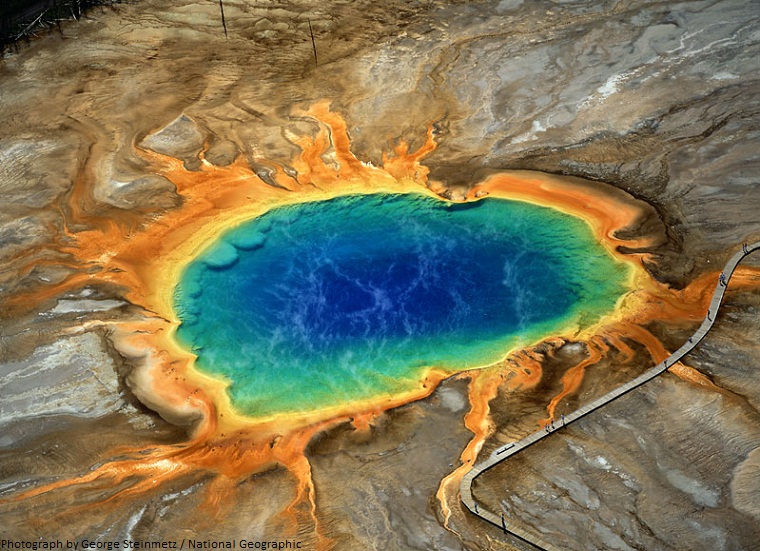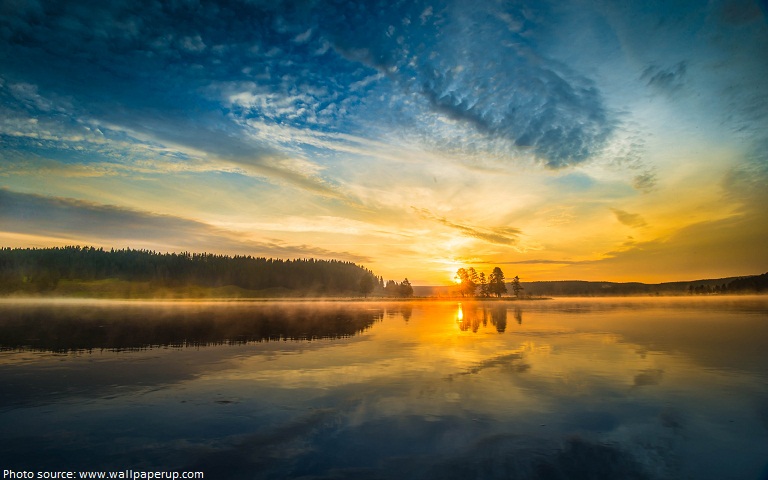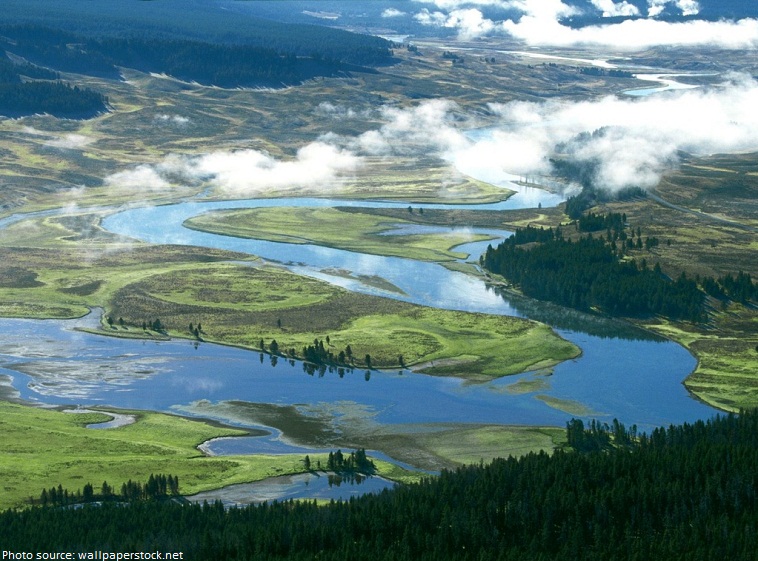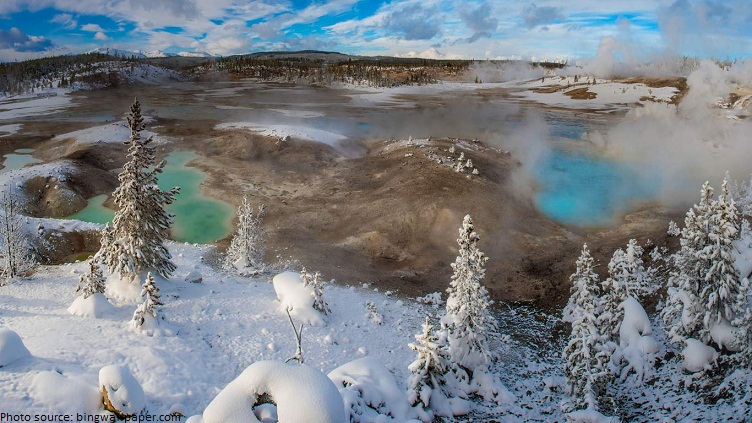Yellowstone National Park was established on March 1, 1872. It is the world’s first national park.
Yellowstone National Park is located in the U.S., northwest corner of Wyoming, and includes small areas of Montana and Idaho as well.
Yellowstone National Park is about 9,000 square kilometers (3,500 square miles) wilderness recreation area atop a volcanic hot spot.
It’s the site of America’s greatest concentration of geysers and hot springs, which form a visible and spectacular link with the primeval forces of the Earth’s creation.
Yellowstone National Park is home to some 10,000 thermal features, over 500 hundred of which are geysers. In fact, Yellowstone contains the majority of the worlds geysers.
Old Faithful is the most popular attraction in Yellowstone National Park, and everyone who visits for the first time should watch this most famous of geysers erupt. Although neither the highest or most regular geyser in the Park, it is spectacular.
Lower Falls and Grand Canyon of the Yellowstone – Yellowstone’s Grand Canyon may not be as big as the Grand Canyon in Arizona, but it is nonetheless breathtaking. The Lower Falls of the Grand Canyon, at 94 meters (308 feet) high, is one of the most photographed features in all of Yellowstone.
Hayden Valley – This valley, centrally located in Yellowstone National Park, is the first place to go to see wildlife in Yellowstone. As you drive along this beautiful, broad valley you are likely to see herds of bison, scattered elk (and the occasional herd), and the occasional grizzly bear. You are also likely to see waterfowl, including ducks, Canadian geese and pelicans, swimming in or lounging near the Yellowstone River.
Yellowstone National Park have 67 different mammals live here, including many small mammals.There is also 285 species of bird, 16 species of fish, more than 7 aquatic nuisance species, 5 species of amphibians, 6 species of reptiles.
Yellowstone is notable for its predator–prey complex of large mammals, including seven large predators: black bears, Canada lynx, coyotes, grizzly bears, Pumas, wolverines, and wolves.
It is home to eight ungulate species: bighorn sheep, bison, elk, moose, mountain goats, mule deer, pronghorn, and white-tailed deer and many other prey species.
Mammoth Hot Springs – Several key ingredients combine to make the Mammoth Hot Springs Terraces: heat, water, limestone, and a rock fracture system through which hot water can reach the earth’s surface.Today’s geothermal activity is a link to past volcanism. A partially molten magma chamber, remnant of a cataclysmic volcanic explosion 600,000 years ago in central Yellowstone, supplies one of the ingredients, heat.
Grand Prismatic Spring, located in Midway Geyser Basin, has the distinction of being the park’s largest hot spring (3rd largest in the world). It measures approximately 113 meters (370 feet) in diameter and is over 37 meters (121 feet) deep. Grand Prismatic Spring was noted by geologists working in the Hayden Geological Survey of 1871, and named by them for its striking coloration. Its colors match the rainbow dispersion of white light by an optical prism: red, orange, yellow, green, and blue.
Yellowstone Lake is 7,732 feet (2,357 m) above sea level. It is approximately 32 kilometers (20 miles) long and 22.5 kilometers (14 miles) wide. The shoreline is in excess of 160 kilometers (100 miles). Its average depth is 42 meters 137 feet, although it reaches down to 97.5 meters 320 feet.
The Yellowstone River winds its way through Yellowstone National Park, including sections with crashing waterfalls and areas of calm, lazy flow. The river is approximately 1,114 km (692 miles) long.
Norris Geyser Basin — One of Yellowstone National Park’s most popular geyser basins, Norris is home to Echinus (one of the Park’s most popular geysers) and Steamboat (the world’s tallest geyser). In addition, there are several miles of boardwalks from which you can explore dozens of multi-colored thermal features.
Tower Fall is the most popular waterfall in Yellowstone other than the Lower Falls of the Grand Canyon. The fall plunges 40 meters (132 feet).
There are over 40 major waterfalls in Yellowstone.
There are 290 waterfalls throughout Yellowstone Park that are more than 4.5 meters (15 feet tall) and flow year-round
Yellowstone National Park is about 102 kilometers (63 miles) long and 84 kilometers (54 miles) wide.
Approximately 5% of the park is covered by water; 15% is grassland, and 80% is forested.
80% of Yellowstone National Park is forested and of that 80%, 80% of the trees are lodgepole pines.
Old Faithful erupts every 91 minutes.
96% of Yellowstone National Park is located in Wyoming, 3% is in Montana, and 1% is in Idaho.
Each year, 1,000 to 3,000 earthquakes occur within Yellowstone National Park and its immediate surroundings.
Yellowstone National Park is an active super volcano.
There are only 30 active super volcanos in the world and Yellowstone Park is one of them and the only one to be located on land.
The number of visitors to Yellowstone National Park in 2015 was about 4 million.

